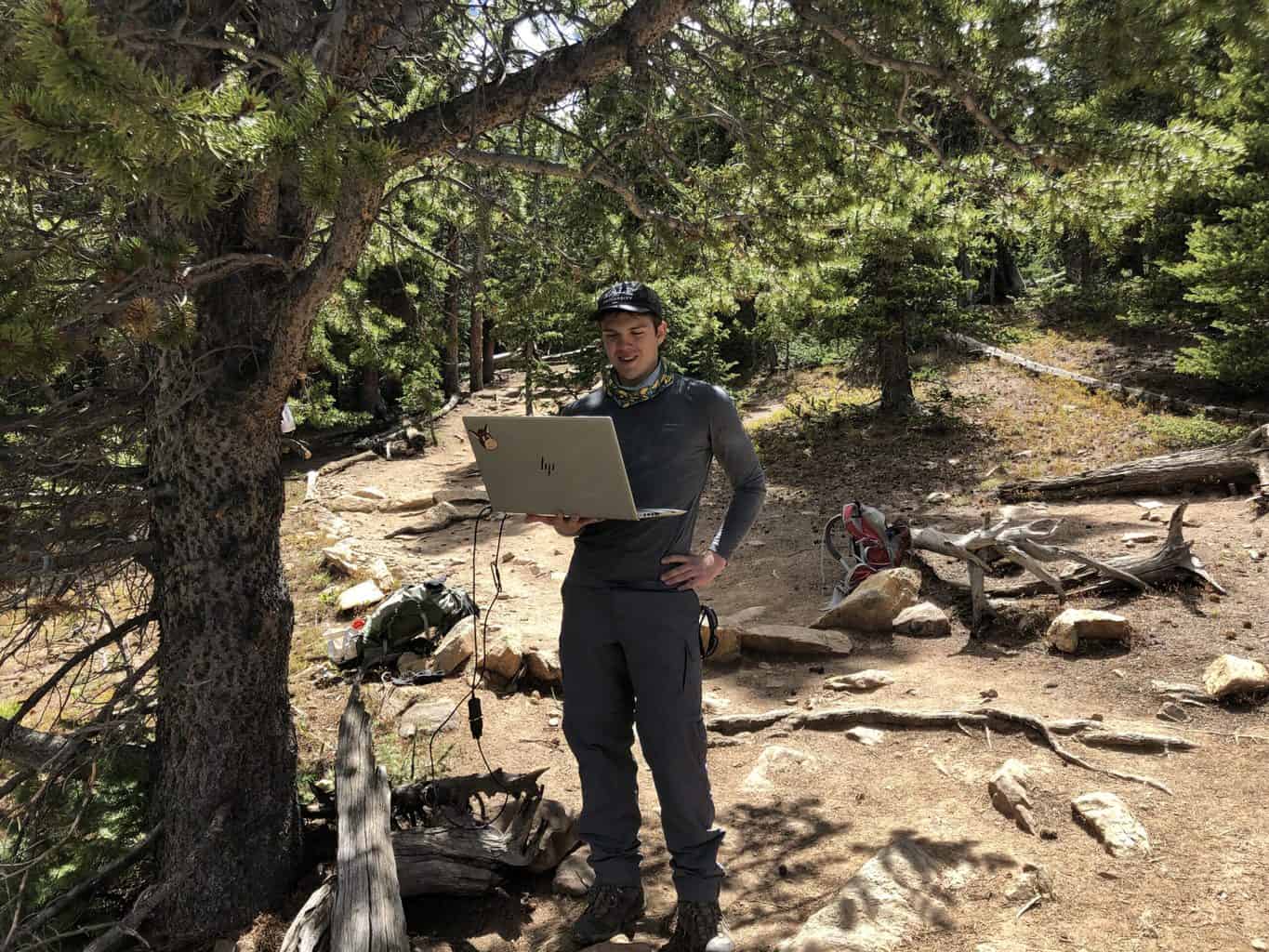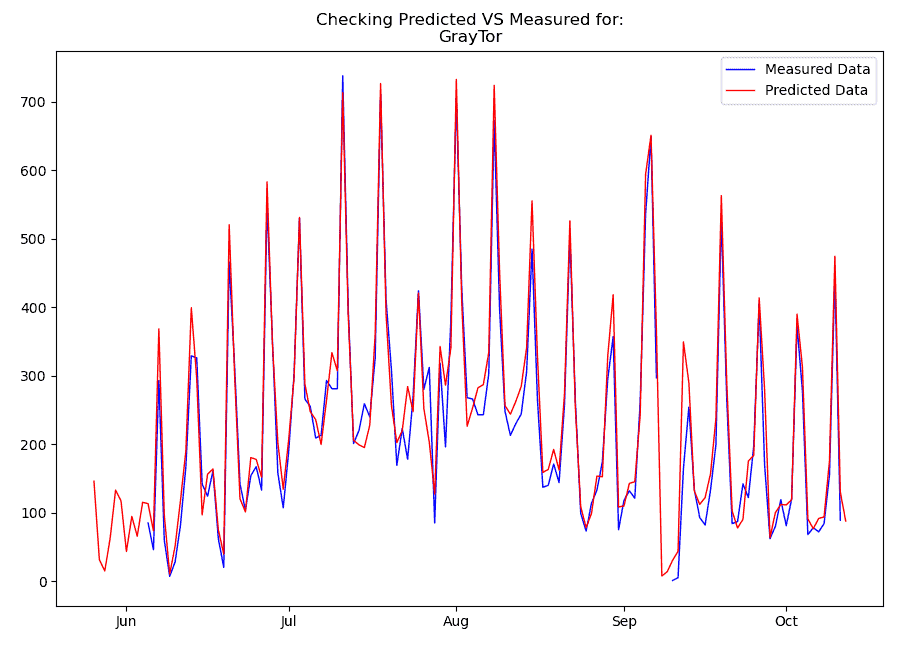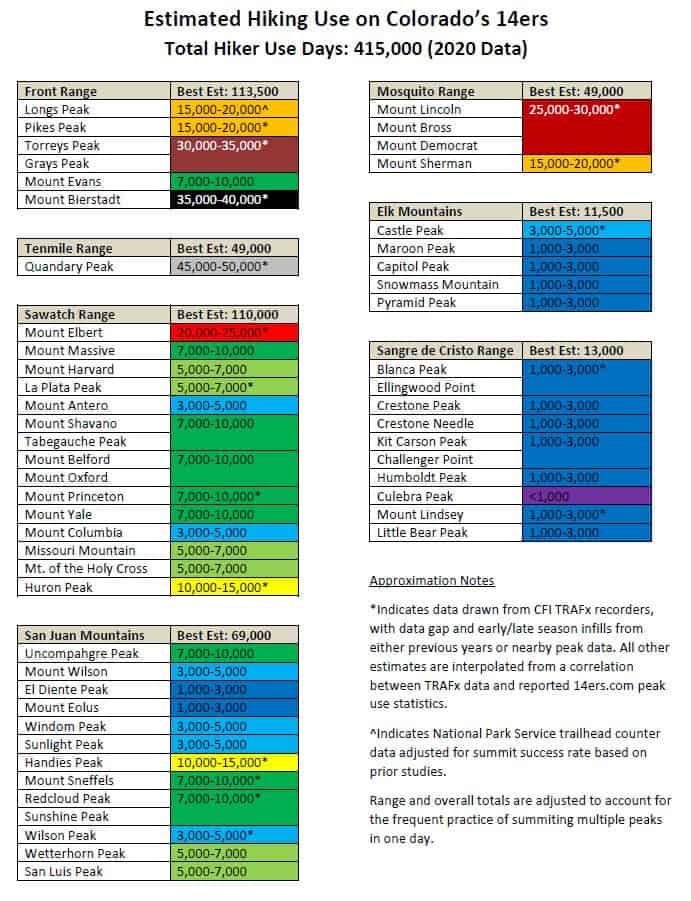Colorado Fourteeners Initiative has been studying hiking use on Colorado’s 14,000-foot peaks – the 14ers – using infrared trail counters since 2014. In 2016, CFI released its first-ever report on Fourteener hiking use and economic impact. This year, after five full seasons with 20+ thermal counters in the field, Colorado Fourteeners Initiative is releasing the fifth iteration of our report that estimates that Colorado’s 14ers experienced 415,000 hiker use days in 2020. The number of people climbing a 14er in Colorado last year surged by 44 percent. The COVID-19 pandemic resulted in record use levels on many public lands as people sought the relative safety of recreating outdoors and distanced themselves from other people. The comparison with 2019 (288,000 hikers days) was made starker by the lingering snowpack and avalanche debris-choked roads in the first of that season. When compared to the 2018 prior high of 353,000 hiker days, the 2020 season total was up 18 percent. This level of recreational use suggests a statewide economic impact of more than $112.5 million, based on past 14er-related expenditure studies performed by Colorado State University economists John Loomis and Catherine Keske. Their 2009 study found that climbers of Quandary Peak near Breckenridge spent an average of $271.17 per day for gasoline, food, lodging, equipment, and other retail purchases.

2020 summer intern Matt Albritton visits the trail counter on Elbert’s north ridge to install new batteries and reset the unit ahead of the busy hiking season.
CFI’s most recent hiking use report culminates six seasons of data collection at up to 23 sites tracking use on up to 21 14er peaks across the state. (There were five counters in 2014, 10 counters in 2015, 20 counters in 2016-2017, 22 counters in 2018-2019, and 23 counters in 2020.) CFI’s hiking use projections are based on the combination of several data sources.
- CFI collected hour-by-hour data during the 2020 hiking season using TRAFx compact infrared trail counters that were placed at 23 locations adjacent to hiking trails servicing 25 Fourteener peaks.
- Hiking use projections for all other 14ers were based on crowdsourced “14er checklists” submitted to the 14ers.com website by more than 20,000 individual hikers. Estimates for peaks without trail counters were calculated using a trend line calculated by the relative frequency of reported hiking use on all peaks using data points as anchors for peaks that had counters in 2020.
In 2020, Matt Albritton, a Yale undergrad studying computer science and engineering, helped further refine CFI’s data modeling program that was originally developed in 2016. Matt cleaned and rewrote the program’s code and created an updated version using Python. The program helps fill in gaps in the data due to obscured counter sensors or periods in the early or late season when the counter is not in place. This model incorporates the week of the season, day of the week, holidays, and similar peaks with data to fill in missing data. See an example below of the predicted vs. measured data for one of the peaks.

CFI uses a multi-factor modeling program to predict hiking use levels when we do not have a counter on a given peak or when there are data gaps. The predicted 2020 use levels on Grays and Torreys trail (red line) largely mirror what was observed by our counter (blue line).
CFI has long been interested in the amount of hiking use these popular peaks receive. Colorado’s 14ers are among the most sought-after mountain peaks in the country. They also possess some of the most fragile alpine landscapes. Hiking use is confined into a very short four-month climbing season when the mountains are largely free of snow. Natural resource impacts in the fragile alpine tundra environment, stemming from the lack of properly designed and constructed summit trails on the 14ers, led to CFI’s founding back in 1994. Our “14er Report Card” released in 2015 showed the need for $24 million to build out and improve the summit trail network. Better understanding hiking use levels, dispersal over the climbing season, and changes over time are important factors in determining the link between hiking use and changing on-the-ground conditions of natural surface summit trails. Special thanks goes out to CFI’s summer CLIMB interns Emily Barnes (2016), Nick Dahl (2018), and Matt Albritton (2020) who performed the analysis for these hiking use studies and assisted in placing and downloading trail counters.
Additional Links:
2019 14er Hiking Use Estimates
2018 14er Hiking Use Estimates

